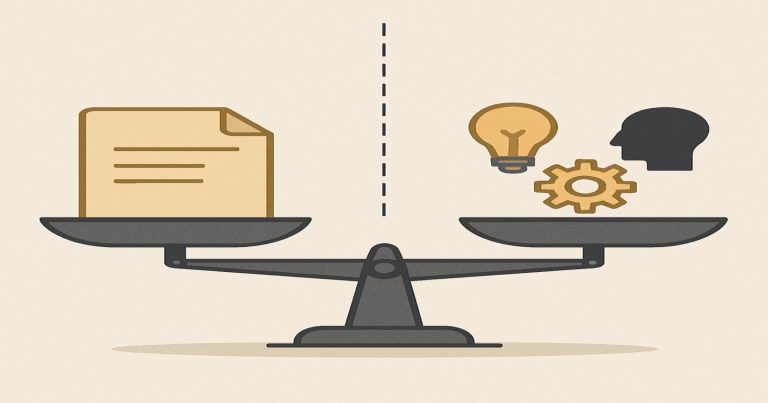The difference between fictitious assets and intangible assets is a misconception among accounting students. Neither is the same as another, but both show up on a company’s balance sheet. The difference between fictitious vs intangible assets is the way in which they are used and the nature of the assets. Fictitious assets are not real assets, they are an expense demonstrated as an asset, such as ‘preliminary expenses’ or discounts on the issue of shares. They are not in the flesh and not for sale. On the other hand, things like patents, goodwill and trademarks that hold long-term value are real non-physical assets such as intangible assets. Knowing the differences between fictitious assets vs intangible assets is of utmost importance for both exams and the professional world of financial analysis.
What are Fictitious Assets?
Fictitious assets are fake assets. They aren’t real, yet businesses display them as an asset on the balance sheet. These assets are not physically or even monetarily valuable. They are not actually shown by companies you only see them accounting.
Characteristics of Fictitious Assets
It has been reported that fictitious assets provide no future benefit. They are past expenses or losses. But because the number is large, companies do not write them off in one step. They gradually divided the cost over years.
They are formed because of the following reasons:
- Initialization expenses for a new business
- First-year costs for heavy advertisement
- Loss on issue of shares or debentures
- Incurred expenses from setting up the company
- Discount allowed on shares or debentures
These are not ordinary expenses. They are special, these are one-time, these are big. Thus, companies book them on the asset side and amortize over time.
Examples of Fictitious Assets
- Costs from the company: Money paid out to create the company
- Debentures issue at discount: When firm issues bonds at the face value.
- Marketing costs: Launching ads, breakout marketing campaigns, etc
- Commissions for raising capital: Fees paid to bankers for raising funds
You will not find fictional assets in small stores and simple businesses. These are applicable in firms that collect money from the public.
What are Intangible Assets?
Intangible assets are valuable that you cannot physically touch. This is beneficial for companies and allows them to make money as well. They hold no pretend quality like fictional assets.
Important Characteristics of Intangible Assets
These assets are invisible, intangible. But the long-term benefits are significant. Many businesses profit primarily due to these intangible assets.
Some key features include:
- They are attached to an expiration date, sometimes specific, and sometimes permanent.
- They contribute to increased profits or market share
- Virtual but non-physical and legal
- Over time their value can increase or decrease
Examples of Intangible Assets
- Brand name: Like the consumers who trust and buy in the name of Apple, Nike
- Goodwill: Reputation of the business in the market
- Patents: Ability to only make or sell something
- Copyrights: Rights on books, software or music
- Trademarks: Distinctive logos or branding
These are valuable, but difficult to measure, assets. That’s why they need experts to value intangible assets.
Differences Between Fictitious Assets vs Intangible Assets
It is quite necessary to understand the difference between fictitious assets vs intangible assets in both accounting theory and practical business. Although both of them are displayed under the assets part of a particular company’s balance sheet, they are completely different with respect to nature, use, value, and treatment. Let’s discuss the differences in these in detail under important heads:
1. Definition
One of the definitions will help you know the difference between fictitious assets vs intangible assets. These are two fundamentally different types of asset from an accounting perspective.
Fictitious Assets:
These are not actual assets. Having been spent by a company, the costs or losses are not one the company could have turned into write off the same year. So they temporarily show them as assets until they are fully written off.
Intangible Assets:
These are actual assets. There are no physical objects to hold of value. They contribute to the operations of the company, developing brand image in order of making profit over time. You can’t hit them, but they help the company grow.
2. Nature and Value
A peek at the nature and value of an asset reveals whether it possesses true worth or not. Here we will discuss what are the differences between fictitious assets vs intangible assets when we talk about their real value and existence.
Fictitious Assets:
- Not real or valuable
- Temporary in books
- No physical or intangible value
- Represent losses or expenses
Intangible Assets:
- Real and valuable
- Give future benefits
- Can boost the company’s market capitalization
- Considered long-term assets
3. Examples
Real-world examples lead to the generalization of abstract accounting terms. In the following material, we will exemplify using simple examples how fictitious assets vs intangible assets are observed in realistic scenarios.
Fictitious Assets:
- Startup costs (expenses related to the establishment of the business)
- Marketing costs (large investment in promotion pre-launch)
- Issue of Shares/Debentures at Discount
- Underwriting commission
Intangible Assets:
- Goodwill
- Brand name (Tata, Infosys etc)
- Patents
- Copyrights
- Trademarks
- Franchise rights
4. Accounting Treatment
The accounting treatment explains how each asset finds its way into the books and how it is managed. This part will show you the different rules of fictitious assets vs intangible assets in accounting.
Fictitious Assets:
- Show up on asset side of the Balance Sheet as “Miscellaneous Expenditure”
- Depreciated gradually over 3-5 years
- Covasion: Treated as deferred revenue expenditure
- Not recognized as per the new accounting framework (Ind-AS/IFRS)
Intangible Assets:
- Show up in the balance sheet as non-current assets
- Spread out over the asset’s useful life
- Valued professionally
- Impairment Tests AS 26 and Ind-AS 38
5. Impact on Business
Every asset impacts a business in a unique way. In this section, it shows the difference between fictitious assets vs intangible assets effect on the company’s growth, value, and financial status.
Fictitious Assets:
- Do not add any real value
- Expand the visibility of expenses across the year
- Need to be written off at the earliest.
Intangible Assets:
- Add value to the company
- It will certainly enhance the branding, customer loyalty, and profitability
- Goods that may be bought, rented, or leased
6. Legal and Financial Recognition
Legal and financial recognition determines if an asset is officially accepted within accounting and law. Some things are legally protected and valued; somethings are not. In this part, we work through the treatment of fictitious assets vs intangible assets under financial and legal rules.
Fictitious Assets:
- Not classified as real assets by legal or financial experts
- Permanently accepted solely in internal books
- It is not used in calculating the overall worth of the company
Intangible Assets:
- Legally recognized
- Intellectual Property Laws (e.g. trademarks and patents)
- Company valuation and merger deals
7. Depreciation/Amortization
Depreciation or amortization spreads the cost of an asset out over its useful life. In this section, what is fictitious assets vs intangible assets loss is discussed regarding their cost reduction procedure.
Fictitious Assets:
- Not depreciated
- Manual write-off over time
Intangible Assets:
- Depreciated (cost is spread over useful life)
- Impaired when value reduces
8. Impact on Cash Flow
The ins and outs of cash flow show the money flowing into and out of a business. Some are pure income generators, while the rest do not affect cash. In this section, we will look at fictitious assets vs intangible assets and how they affect a company’s cash flow.
Fictitious Assets:
- Represent cash already spent
- No future cash inflow
Intangible Assets:
- Bring prospect cash flow in next; through business or royalty
9. Reporting Standards
How companies report their financial statements is subject to reporting standards, which dictate how companies show assets. There is no universal truth; the accounting framework is king and different assets have different rules. In this section, we will describe how fictitious assets vs intangible assets are presented under existing accounting standards.
| Aspect | Fictitious Assets | Intangible Assets |
| Accounting Standard | Not allowed under Ind-AS and IFRS | Treated under Ind-AS 38 and AS 26 |
| Place in Balance Sheet | Under Misc. Expenditure | Under Non-Current Assets |
| Valuation | Not valued, just written off | Valued using fair value or cost model |
| Cash Value | No cash value | Can have cash value or generate revenue |
10. Visual Comparison
While both sides would be more clear by visualising it in a comparative table. It provides an overview of all key differences in one single place. In this section, we present a simple table of fictitious asset vs intangible asset comparative across key points.
| Particulars | Fictitious Assets | Intangible Assets |
| Real or Not | Not real | Real (but not physical) |
| Tangible | No | No |
| Legal Ownership | Not applicable | Yes |
| Future Benefits | No | Yes |
| Can be sold or traded | No | Yes, in many cases |
| Examples | Preliminary expenses, discounts | Goodwill, patent, brand name |
| Value on sale of company | Ignored | Major factor in company valuation |
11. Summary of the Difference
A summary condenses all relevant details into a brief and concise format. So, It aids you to quickly revise and understand the topic. The below section provides a summary of key distinctions between fictitious assets vs intangible assets.
| Particulars | Fictitious Assets | Intangible Assets |
| Are they assets in real? | No | Yes |
| Basis of creation | Past expenses or losses | Developed or acquired rights |
| Role in business | No active role | Very important in operations |
| Are they visible? | No | No |
| Give future benefits? | No | Yes |
| Legal protection available? | No | Yes (like patent, copyright) |
| Legal protection available? | Miscellaneous expenditure | Intangible assets (non-current) |
Real Life Examples in Indian Companies
Associating accounting terminology with practical business scenarios through real-life examples. Your domain knowledge: Many Indian companies have fictitious and intangible assets in their financials. Observing the application of these assets in real firms clarifies the idea. Here are examples from famous Indian companies to clarify fictitious assets vs intangible assets. So, let’s look at how real Indian companies finance these two classes of assets.
Fictitious Assets in Practice
- A new startup could spend ₹10 lakhs on branding before launching.
- This cannot all be shown as an expense in Year 1.
- Hence, it falls under false assets and is written off in 5 years.
But under the new Indian Accounting Standards (Ind-As), such assets should not be recorded at this stage.
Intangible Assets in Indian Companies
- Software copyright and licensing fees — Infosys.
- Hindustan Unilever’s popular trademarks include Lux, Dove
- Intangible Assets: Airtel has brand value and customer lists
Below are some true India case studies on the right use of intangible assets from leading Indian companies.
Relevance to ACCA Syllabus
It is covered in ACCA papers such as Financial Reporting (FR), Strategic Business Reporting (SBR) and Financial Accounting (FA). Students will learn to classify, recognize, amortize, and impair assets according to IAS 38 and IFRS.
Fictitious Assets vs Intangible Assets ACCA Questions
Q1. Intangible assets are recognized under IAS 38 where:
A. They can be sold after 6 months
B. They have a physical form
C. Future economic benefits are likely and cost can be measured
D. They are financed with capital reserves
Answer: C
Q2. Which one of the following is a fictitious asset?
A. Patent
B. Copyright
C. Discount on the issue of shares
D. Trademark
Answer: C
Q3. What is the difference between intangible and fictitious assets?
A. Physical vs intangible nature of the economic assets
B. Intangible assets are beneficial, fictitious are not
C. Intangible assets are classified as liability
D. Phony assets boost company earnings
Answer: B
Q4. Goodwill should be:
A. Considered a fictional asset
B. Amortized over 3 years
C. Only recognized upon purchase
D. Deducted in full in the year they were incurred
Answer: C
Q5. Under IFRS Which of these is NOT an intangible asset?
A. Trademarks
B. Brand names
C. Deferred revenue
D. Patents
Answer: C
Relevance to US CMA Syllabus
CMA Part 1 (Financial Planning, Performance, and Analytics) requires candidates to accurately classify assets appearing on financial statements, determine their valuation as well as differentiate between capital and revenue expenditures.
Fictitious Assets vs Intangible Assets US CMA Questions
Q1. In managerial accounting, which of following is a fictitious asset?
A. Trademark
B. Loss on issuing debentures
C. Customer list
D. Software license
Answer: B
Q2. Intangible assets:
A. Are liabilities in nature
B. Not yield any future benefit
C. Non-physical assets that are generated future economic benefits
D. Only are used in government accounting
Answer: C
Q3. Intangible assets amortization is required for:
A. Labor Rates—Grow with Market Rates
B. Spread cost over useful life
C. taxation of imaginary properties
D. Increase in shareholder equity
Answer: B
Q4. Which of the following will NOT be capitalized as an intangible asset?
A. Copyright
B. Patent
C. Preliminary expenses
D. Trademark
Answer: C
Q5. When should fictional assets be included in financial statements?
A. When preparing tax filings
B. Reconciliation to IFRS
C. Also Correcting Previous Errors
D. They should not be appearing in the modern
Answer: D
Relevance to US CPA Syllabus
Key topics in US CPA in Financial Accounting and Reporting (FAR) include GAAP vs. IFRS treatment of assets, impairment testing, asset classification, and the income statement presentation.
Fictitious Assets vs Intangible Assets US CPA Questions
Q1. Which of the following would NOT qualify as an intangible asset under US GAAP?
A. Franchise rights
B. R&D costs already expensed
C. Non-compete agreement
D. Patent
Answer: B
Q2. Fictitious assets are:
A. Noncurrent assets and disposal groups classified as held for sale
B. Deferred losses with zero real future benefit
C. Rights over land
D. Cash equivalents
Answer: B
Q3. For fictive assets, the principle accounting treatment is:
A. Amortization under GAAP
B. Expense recognition and elimination
C. Depreciation over 10 years
D. Investment recognition
Answer: B
Q4. Under US GAAP, intangible assets acquired in a business combination must be:
A. Expensed immediately
B. Not recorded unless physical
C. Recognized at fair value
D. Shown under liabilities
Answer: C
Q5. Which of the following is NOT a characteristic of intangible assets under GAAP?
A. Lack of physical substance
B. Identifiability
C. Ability to transfer
D. Depreciation by historical cost on the historical cost
Answer: D
Relevance to CFA Syllabus
Candidates in the CFA Level I Financial Reporting and Analysis (FRA) section examine how intangible assets are treated, why they matter to valuation and how non-real assets skew firm financials.
Fictitious Assets vs Intangible Assets CFA Questions
Q1. A firm capitalizes a significant advertising expense. This is an example of:
A. Goodwill
B. Intellectual property
C. Fictitious asset
D. Brand equity
Answer: C
Q2. What are the potential future economic benefits of the asset?
A. Additional discount permitted on the issuance of shares
B. Advertising expense to be deferred
C. Patent
D. Preliminary expense
Answer: C
Q3. Intangible assets impact valuation analysis by the following:
A. Always increase earnings
B. Are often difficult to quantify and are capable of distorting book value.
C. Never change net income
D. Liabilities
Answer: B
Q4. Phantom assets can deceive investors through:
A. Enhancing real property valuations
B. Raising revenue guidance
C. Overstating total assets for no actual value
D. Hiding liabilities
Answer: C
Q5. An analyst studying financial statements should:
A. Include fictional assets in valuation
B. Only if physical assets exist should intangible assets be considered
D. Eliminate fictional assets for cleaner analysis
D. Do not use classes to classify assets at all
Answer: C


